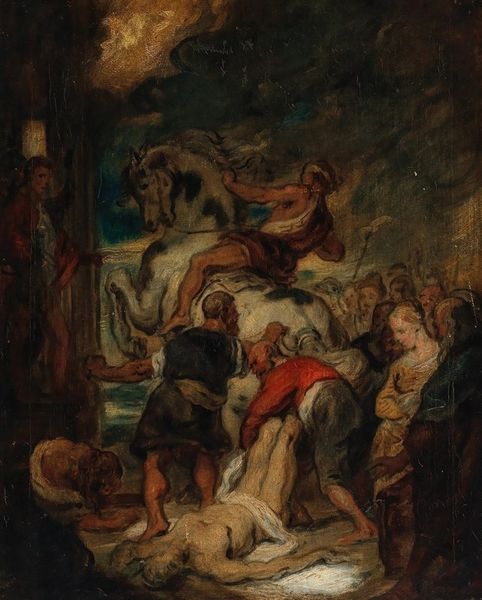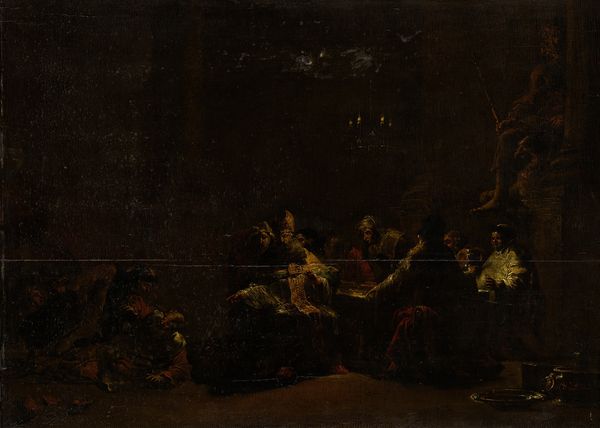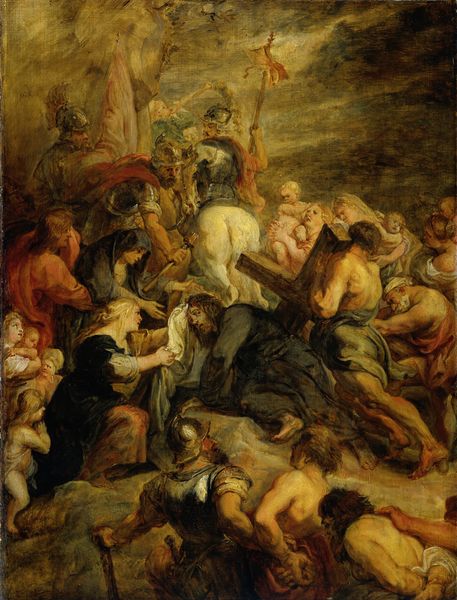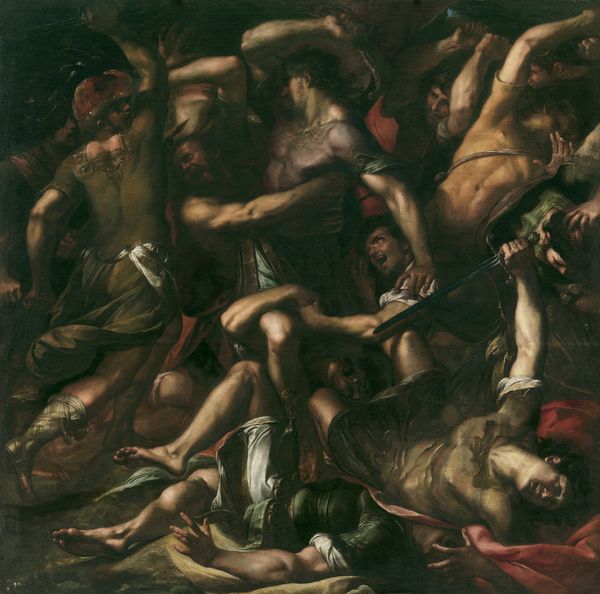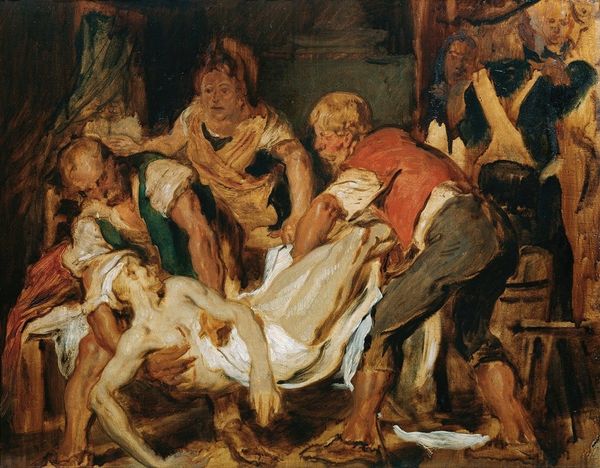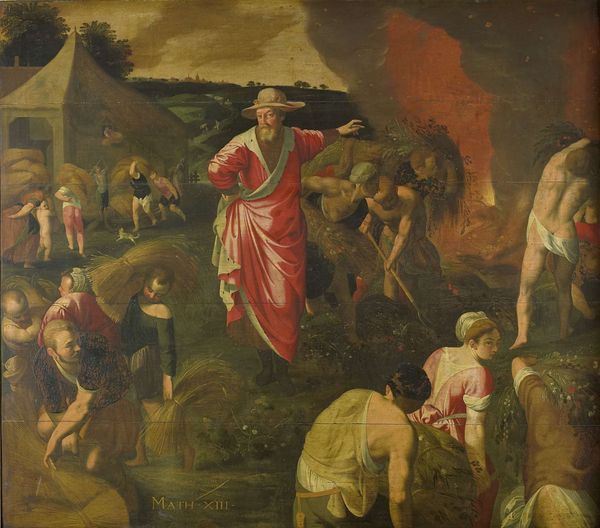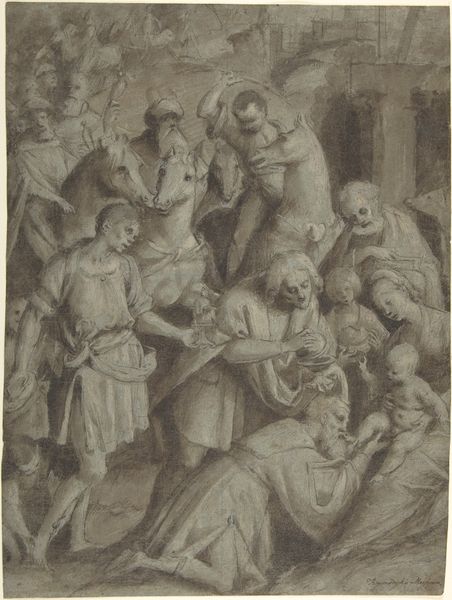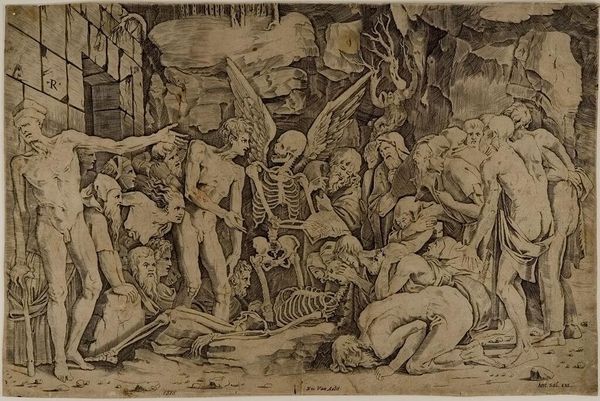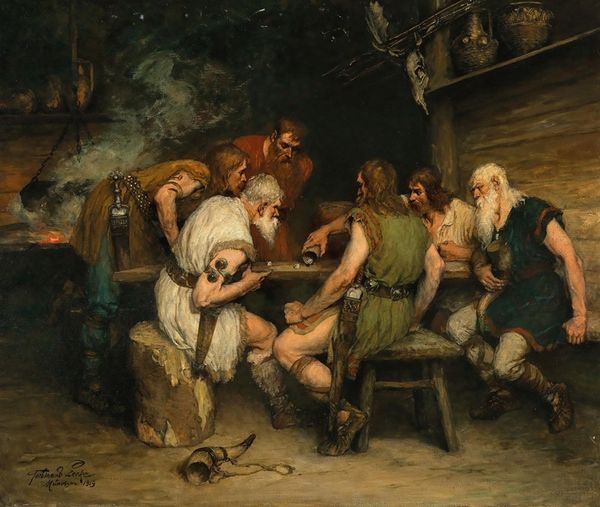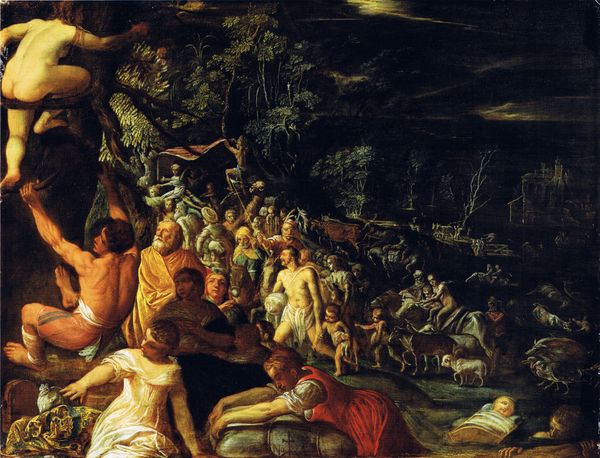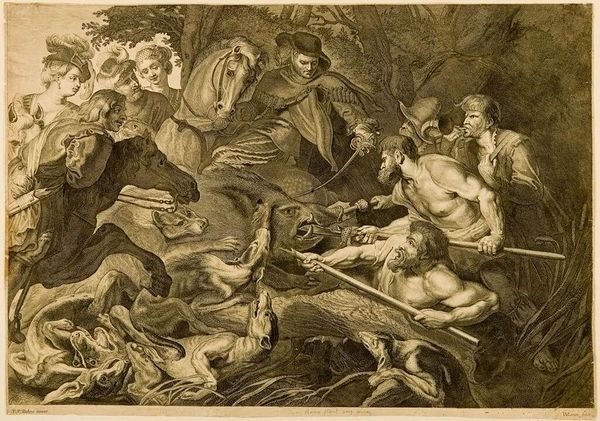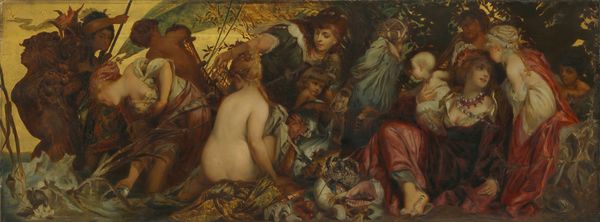
oil-paint
#
narrative-art
#
baroque
#
oil-paint
#
figuration
#
oil painting
#
history-painting
Copyright: Public Domain: Artvee
Curator: Alright, so here we have "The Betrayal of Christ" by Jacob Jordaens, dating back to the late 1650s. My first impression is one of intense theatricality, almost operatic. The contrast between the light and shadow, it’s so… stark. Editor: Yes, stark and deliberate, as a narrative that continues to challenge structures of power. The painting screams Baroque drama, but the story, of course, goes way back, with lingering impacts to this day. Think about the dynamics on display. Who has power here? And what do they wield it? Curator: You can almost feel the chill of the night air, the heavy breathing of the mob. The figures are rendered with such… physicality. Jordaens really knew how to paint flesh, didn't he? It feels so human. Raw, even. It's like you're right there, huddled in the shadows, witnessing the moment. Editor: And notice, this isn't just a passive depiction. Consider who's left out. The painting reinforces systems and normalizes violence sanctioned by social forces, as they remain nameless and faceless. Is it just the characters present who betray Jesus in this telling, or could Jordaens also question something else in this work? Curator: Mmm, true. There's an underlying darkness in this piece. A sense of… moral ambiguity? Because, you know, he captures all that brutality, and fear and hatred, sure. I can almost smell it. Still, at the very center, Jesus looks more resigned than surprised, sadly. It feels… predestined, maybe? As though resistance were futile. Editor: Indeed, but is that acceptance? Submission? Or quiet determination? Jordaens doesn't spoon-feed us the answer, because for communities facing marginalization or outright hate due to how they identify, or where they’re from, “The Betrayal” feels relevant, as the state sanctioned violence represented on that fateful evening echoes over centuries to come. Curator: Yeah. Now you point it out, I guess the "point" isn't really the moment itself, is it? Instead, he leaves us dangling—right before the rest begins... Thanks for making me think! Editor: That's the thing about these kinds of works. By acknowledging its complexity and asking difficult questions, this centuries-old art provides more possibilities for learning about both ourselves, and a long cultural history we all remain steeped in.
Comments
No comments
Be the first to comment and join the conversation on the ultimate creative platform.
